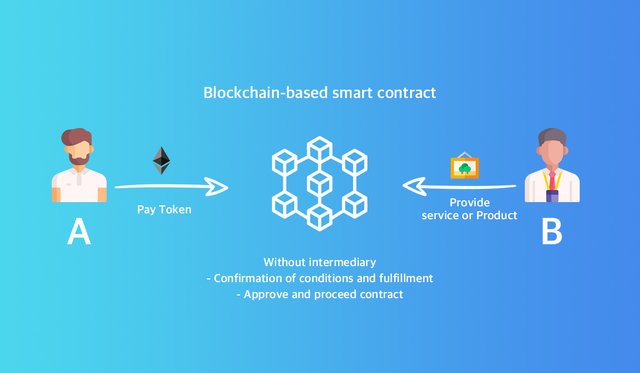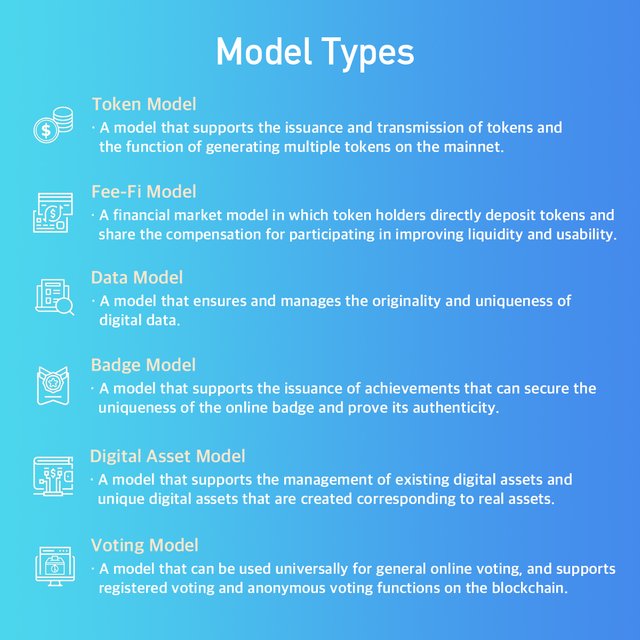What is Model?
Hello. This is team Protocon Network. In the last episode, we talked about the definition of Protocon and unresolved problems in the blockchain industry. If you haven’t read the first article yet or would like to learn more about the Protocon Network, please check out the first episode What is Protocon?
Today, let’s talk about the ways Protocon found to achieve a safer data processing and development environment. Protocon Network presents a new framework called a ‘Model’ that adds security and operational policies to Ethereum’s smart contract structure.
So, what is ‘Model’? Before we explore the model, let’s first look at smart contracts that are similar to model and the platforms that offer them.

According to the Investopedia, A smart contract is a self-executing contract with the terms of the agreement between buyer and seller being directly written into lines of code. Smart contract, first described by Nick Szabo in 1994, is a concept that focuses on its function as a ‘means’ for contracts. Although the concept of smart contracts emerged in the '90s, it was not developed or used due to technical limitations at that time. Afterwards in 2015, Ethereum introduced Smart Contract as a real service for the first time.
Smart contracts, which have more features than just sending cryptocurrencies, operate in the following mechanism:

A sends 1 Ether ‘without incoming address’. Although there is no incoming address, A writes a code that says A will send Ether to B if certain conditions are satisfied within the transaction and sends it.
When a transaction is recorded on the blockchain, all participants execute the code inside. Then a contract account is created on the Ethereum blockchain that is run by code. The transaction amount A will send B will be kept in the contract account.
B provides a product or service after checking the amount held in the contract account and the codes (contract terms).
After receiving the product or service, A sends a small amount of Ether setting a contract account as the recipient. A sends a code stating that the terms of the transaction were satisfied.
When this transaction is recorded and executed in the blockchain, the contract automatically sends the promised transaction amount to B according to the pre-written conditions.
There are several characteristics to smart contracts that operate in this principle.
First, Ethereum can develop its own smart contract.
Second, multiple smart contracts can be operated simultaneously on a single network.
Third, you can run commands that perform contract operations and parameter values separately on smart contracts.
Fourth, if you create a new smart contract or update an existing one, the mainnet will work without interruption.
Then what about other platforms besides Ethereum?
EOS is a decentralized blockchain platform that first introduced the Ricardian contract. Just like Lessig’s claim that “Code is the law.”, smart contracts are predictable and feasible unless there are any errors in the contract conditions on the blockchain. However, frequent bugs or certain errors caused unpredictable situations frequently, and the Ricardian contract was developed to solve this issue by adding the process of establishing ‘intentions’ to the ecosystem. Unlike Ethereum, EOS documents the intentions of the parties and provides evidence to confirm the original intentions when an error occurs on the blockchain and this differs from the smart contract of Ethereum.
In addition, Stellar, known as a cryptocurrency for international remittance, is a blockchain focused on storing and remitting money, and due to its nature, it is not free to implement dApps and platforms through smart contracts. In addition, Stellar uses Turing-incomplete language compared to smart contract, so it is easier and faster than Ethereum but only the basic functions are applicable and the freedom of implementation is less.

Model is a program that handles the various forms of operations required by diverse businesses through a framework that utilizes the functions provided by the blockchain core. Model proposed by Protocon Network is also providing all the features of Ethereum’s smart contract. However, the biggest difference between these two starts from ‘can anyone make transactions on a blockchain.’ Ethereum's Smart Contract allows anyone to create a Smart Contract without limitation as long as the gas fee is paid. There are two big problems with this approach.
1.Even if inappropriate or malicious smart contracts are created, it can only be found out after it is run on a blockchain network. Penalty is also not charged.
2.If incorrect smart contracts are distributed, the entire network ecosystem, including smart contractors, node operators, dApp operators, and users, will suffer.
So, we've added the capabilities of Ethereum's smart contract to the model and the methodology to solve these problems. With the adoption, operation, supplementation and update of the 'model', policies affecting the reliability and value of the blockchain can be applied only through the approval of node operators. The Protocon Network limits the functionality of the smart contract's 'deployment freedom’ but provides the 'implementation freedom' associated with development and provides higher security than Ethereum's smart contract.
The following models are built on model framework and Fee-Fi model, data model, voting model, etc. are under development. Token model is already developed.

dApp service providers can issue their own dApp tokens using the token model. Also, anyone can develop their own model by looking at the model tutorial.
In the next post, I will cover the data model in detail among the models mentioned earlier.
Official Protocon Links
Twitter
Facebook
Telegram
Medium
Reddit
Github